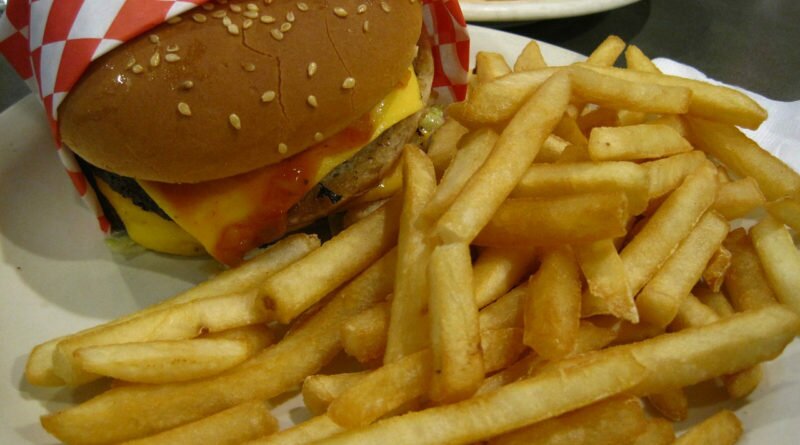Fast Food Just Gets Worse
On any given day, 36.6 percent of American adults eat fast food, according to the U.S. Centers for Disease Control and Prevention. Fast-food restaurants would like you to think their meals are getting healthier. In fact, over the past 30 years, portion sizes have grown, as have calories, and the food has become less healthy, according to a new study of 10 of the most popular U.S. fast-food joints, including several in the North Valley.
Researchers examined menu offerings in 1986, 1991 and 2016, at Arby’s, Burger King, Carl’s Jr., Dairy Queen, Hardee’s, Jack in the Box, KFC, Long John Silver’s, McDonald’s and Wendy’s. Here’s the change they found across three decades:
Calories in all three categories—entrees, sides & desserts—increased significantly, with the largest increases in desserts (62 calories per decade), followed by entrees (30 calories per decade). The change was due mostly to larger portions. Sodium also increased significantly in all three categories.
“Despite the vast number of choices offered at fast-food restaurants, some of which are healthier than others, the calories, portion sizes, and sodium content overall have worsened (increased) over time and remain high,” said lead researcher Megan McCrory, of Boston University.
It seems almost overkill to rehash the badness of fast food, but here goes:
- Those who eat fast food are 51 percent more likely to develop depression, than those who eat little or none of it, one study indicated.
- Another study found women who eat fast food four or more times a week took nearly a month longer to become pregnant than those who rarely or never did.
- The excess sodium in fast food raises the risk of high blood pressure.
- And, of course, when fast food consistently takes the place of fruits, vegetables and other healthy food, the risk of heart disease and stroke goes up.
- And yes, lots of burgers & fries will help you pack on pounds.
The study, announced today, is detailed in Journal of the Academy of Nutrition and Dietetics. Data for 1986 and 1991 was gleaned from the Fast Food Guide, and 2016 data came from online sources, the researchers said.
A typical entree plus side dish at one of these restaurants averages 767 calories, or about 40 percent of the 2,000 calories a day recommended for a moderately active average woman (it’s roughly 2,500 for men).
“Given the popularity of fast food, our study highlights one of the changes in our food environment that is likely part of the reason for the increase in obesity and related chronic conditions over the past several decades, which are now among the main causes of death in the US,” McCrory said in a statement.
This article first appeared in LUMINATE, an In&Out Publications exploration of the human condition and ways to improve it.

